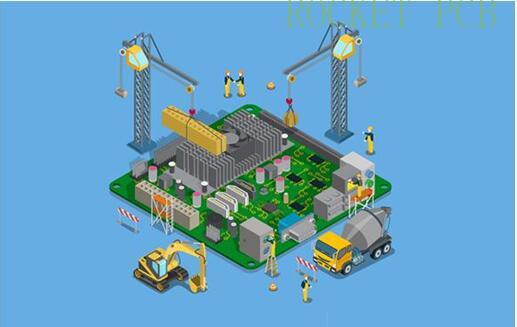Since the car went on the street, the sound broom. . . Has been turning. The integration of electronic products has greatly promoted the development of the automobile PCB industry. The buyer will study the luxury features and the performance of the car or any other vehicle. All these functions, including the performance of the internal combustion engine, are controlled by PCB electronic modules.
With the continuous development, the future of the automobile industry is bright. Self driving, electric vehicle, aerospace, etc. The cars produced by Tesla and other companies are not only environmentally friendly, but also comparable to Ferrari. Soon the demand for gasoline will disappear, and if all goes well, so will human drivers. Next time you board Uber, if there is no one in the driver's seat, please don’t panic.
With the focus on automatic and electric vehicles, the performance of PCB industry in automobile industry will grow rapidly. The printed circuit board combines all the precision sensors with the components needed for the stable operation of the vehicle.
If you just stare at a corner, imagine PCB as a chassis car, engine, sensor, shaft, wheel, all of which form electronic components on the circuit board.

For automobile PCB, reliability is very important. They need to survive in extreme environmental conditions and vibrations without any performance setbacks. In addition, the board is expected to be fully operational in the long term. Heat resistance and service life make automobile PCB different from other PCB. PCB manufacturers must comply with ISO / TS 16949, which is based on ISO 9001 automotive standards.
So, what are these special types of PCBs made of? What kind of substrate is used? Do they have enough fins to dissipate heat? Let’s see.
Flexible PCB - these boards are made of flexible plastic substrates. They consist of PTFE, polyamide or transparent polyester film. These plates can be twisted and bent. They are used in car corners and corners.
Rigid PCB - the rigid board is made of FR4. These boards are not flexible. They are commonly used for display and reverse cam screens.
Rigid-flex PCB - these boards are a combination of rigid and flexible boards. They are implemented in lighting systems.
HDI PCB - these boards have higher linear density per unit area, thinner lines and space, and higher pad connection density. HDI board can hold more components and play an important role in miniaturization. These circuit boards are widely used in infotainment systems.
Led PCB - led substrates are made of aluminum because they need to dissipate heat. They can be found in car lights, headlights and brake lights.
Ceramic substrate - ceramic substrate is made of high temperature co fired aluminum oxide and aluminum nitride. These circuit boards are implemented in the engine compartment because they can withstand high temperature changes.
PTFE PCBs - polytetrafluoroethylene (PTFE) PCB can withstand high frequency and find their application in safety system or radar technology.
Metal core PCB - metal core PCB consists of aluminum base. The base layer is aluminum alloy plate, on which the whole board is built. The base is used as a radiator and is therefore suitable for heat transfer applications. Metal core provides improved electrical insulation and thermal conductivity. These circuit boards are used for the anti lock brake system (ABS).
Heavy copper PCB - automobile printed circuit board uses thick copper (Cu) board in outer layer and inner layer. These heavy copper PCBs are more popular than ordinary copper PCB boards because they can withstand high temperature, high frequency and high current changes. The thickness of copper in conventional circuit board is about 25 μm to 50 μm. However, the thickness of heavy copper PCB is 150 μm to 200 μm. These circuit boards are implemented in safety and signal systems.
As more and more chips are integrated, the materials that combine them will play an important role.
Automobile PCB must conform to strict thermal cycle test, thermal shock test and temperature and humidity test. The circuit board must suppress the CAF defect in the dielectric. CAF can cause a short circuit between the copper clad laminate (CCL) and the conductive trace.
The main concern is autopilot, and the safety of real driverless car is open to question. However, when approaching the stationary vehicle quickly, the system with automatic braking has successfully started braking. By using microchips to control engine performance and vehicle safety, cars increasingly rely on reliable printed circuit boards. PCB is required for all safety functions, such as drowsy driver alarm, blind spot detection.

ECL / ECU control module
Antilock brake system
Digital display
Power relay
Instrument panel
Sensor
Radar
Audio system
DC / AC power converter
Engine timing system
Electronic mirror control
Battery control system
Safety air bag
LED lighting system
Swerve
Engine control system
Air conditioning system
ABS
The list continues to use key elements such as navigation, entertainment and climate control. The growing electric vehicle industry needs PCBs specifically designed to manage fuel efficiency or battery management systems.
From all these things, we can see the fact that the automobile market is very profitable, from which PCB manufacturers can seize the opportunity to take a new step.
Copyright © 2025 Rocket PCB Solution Ltd. | All Rights Reserved Sitemap Friendship link: CNC machining heat sink